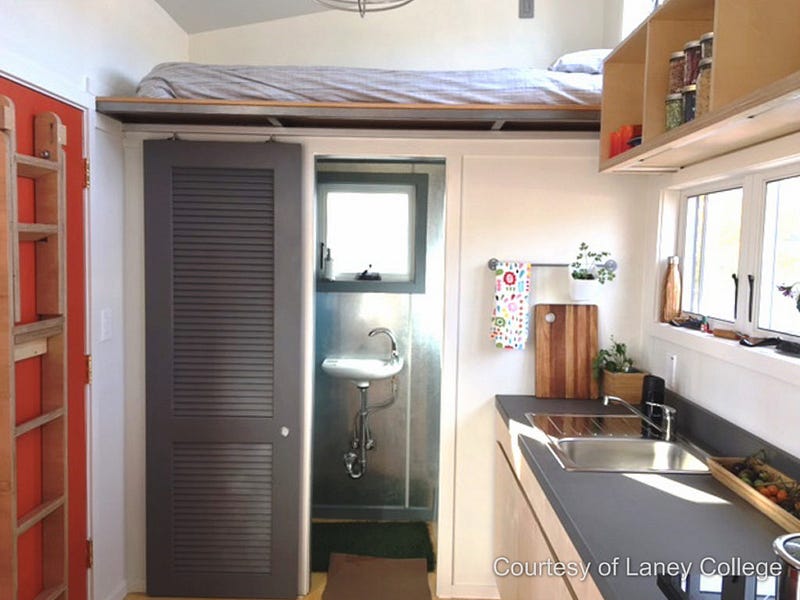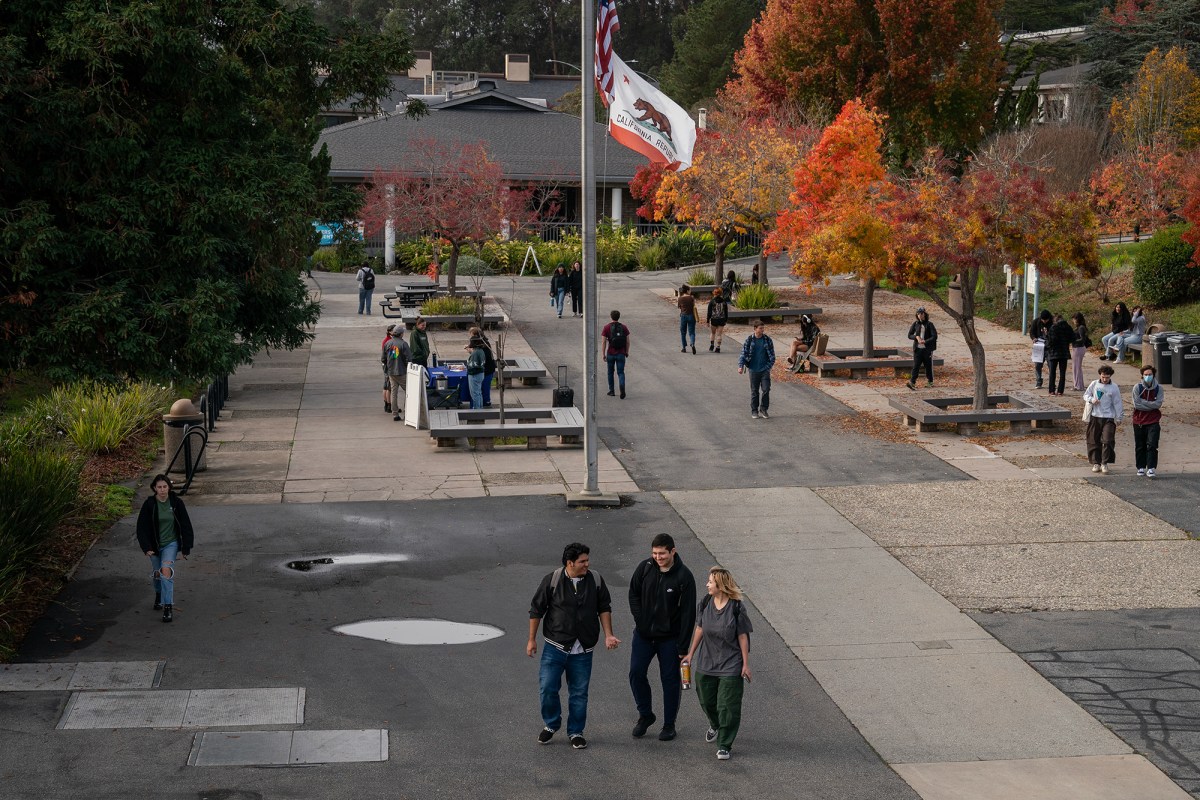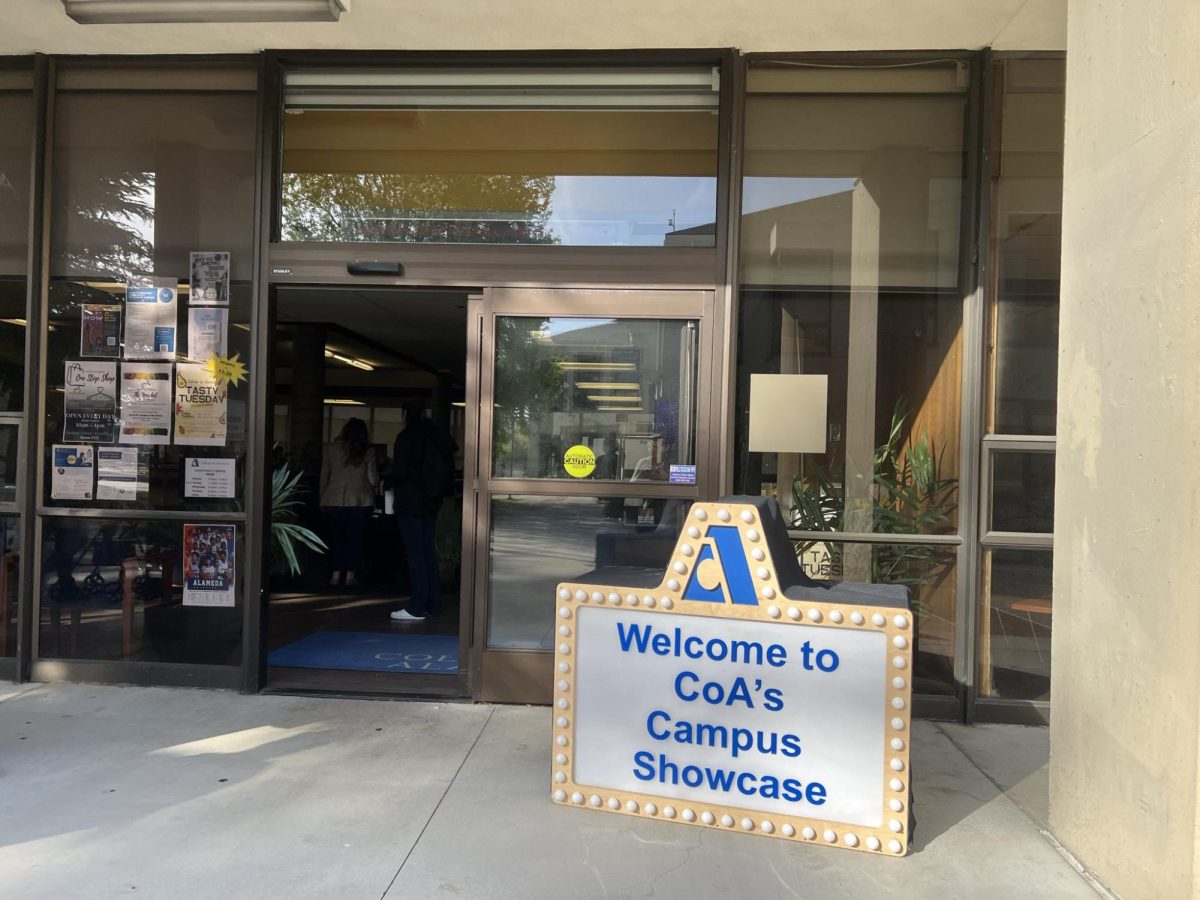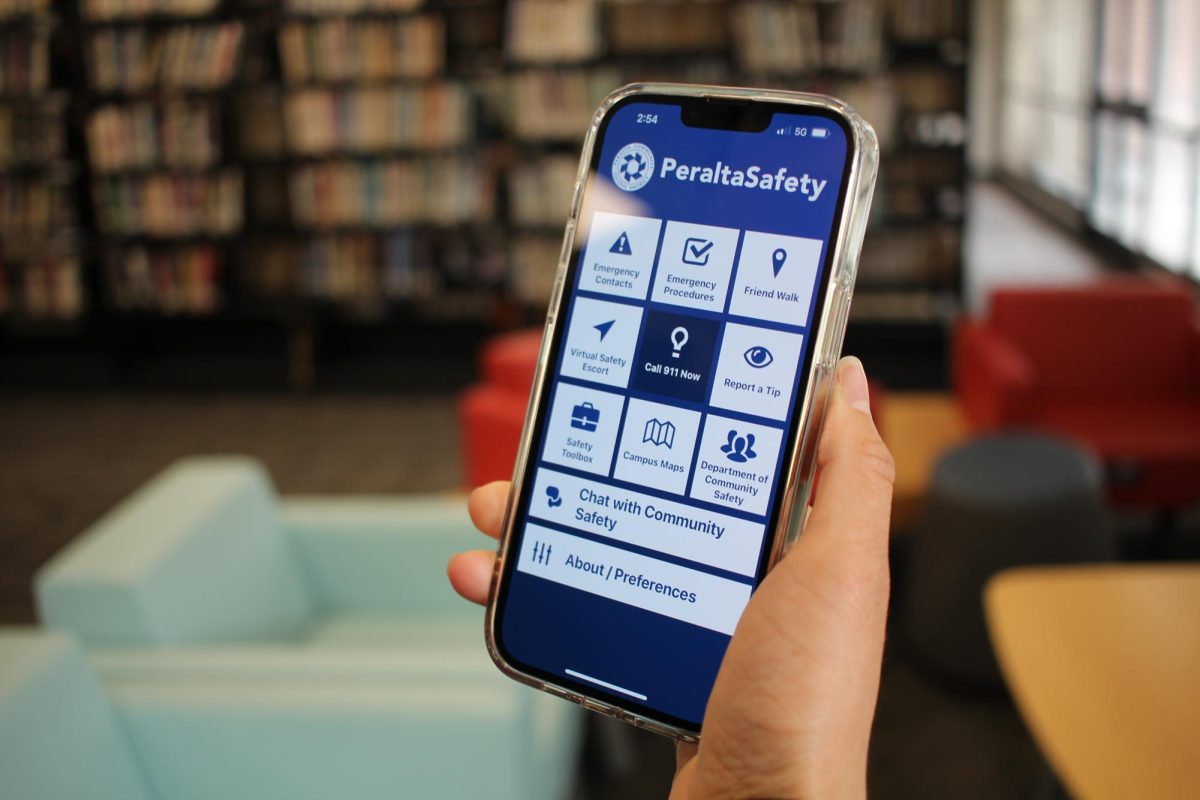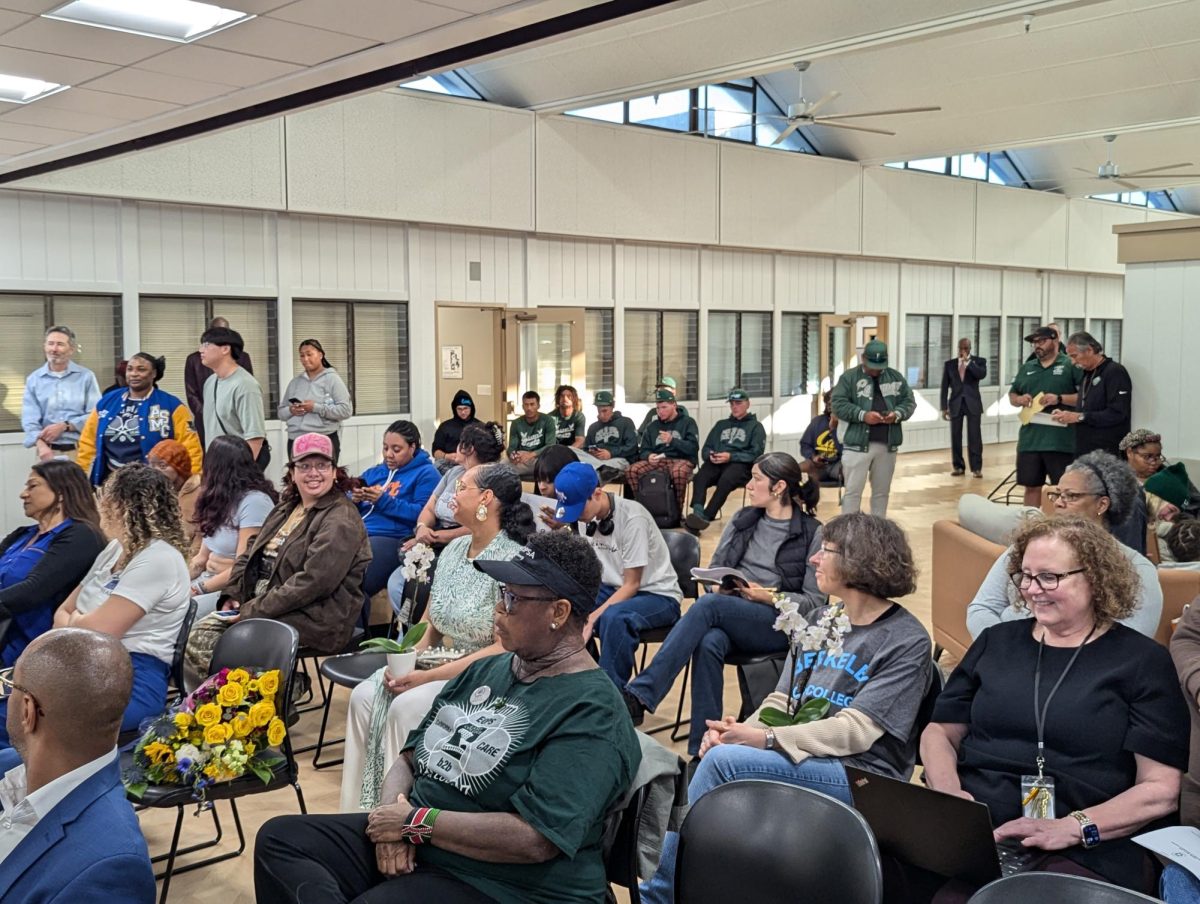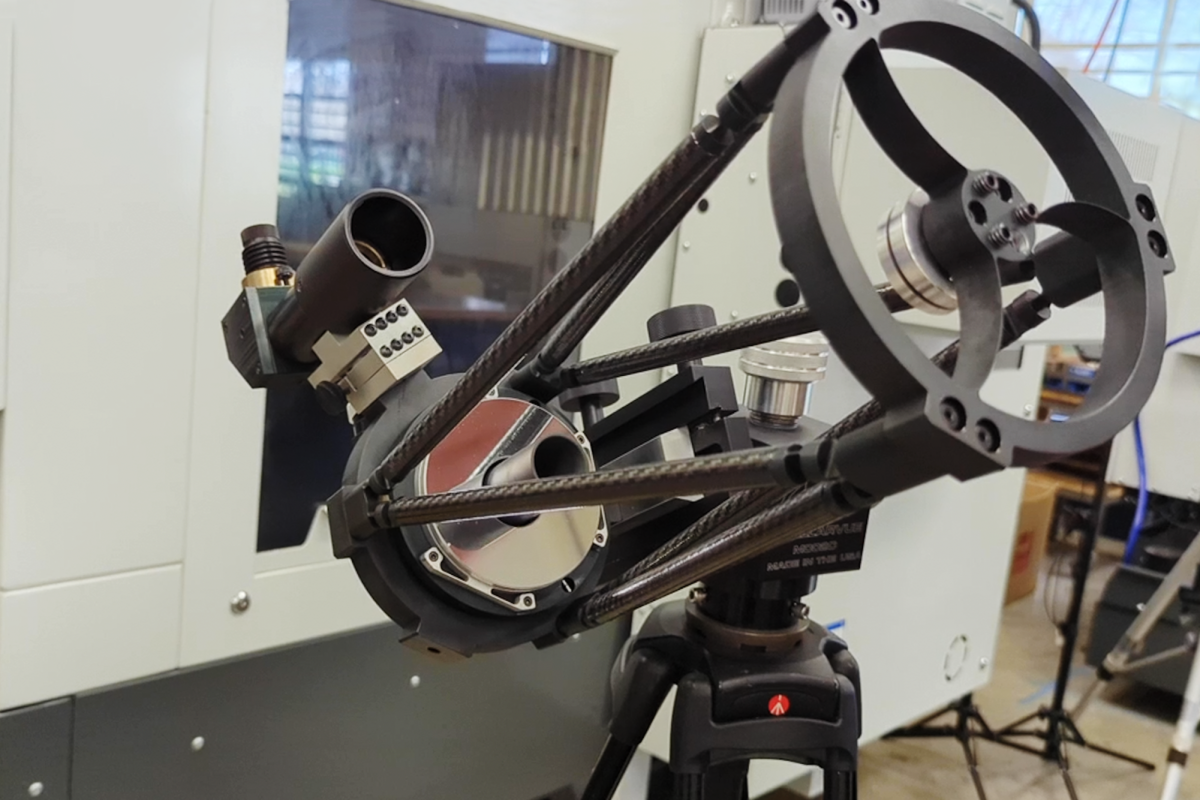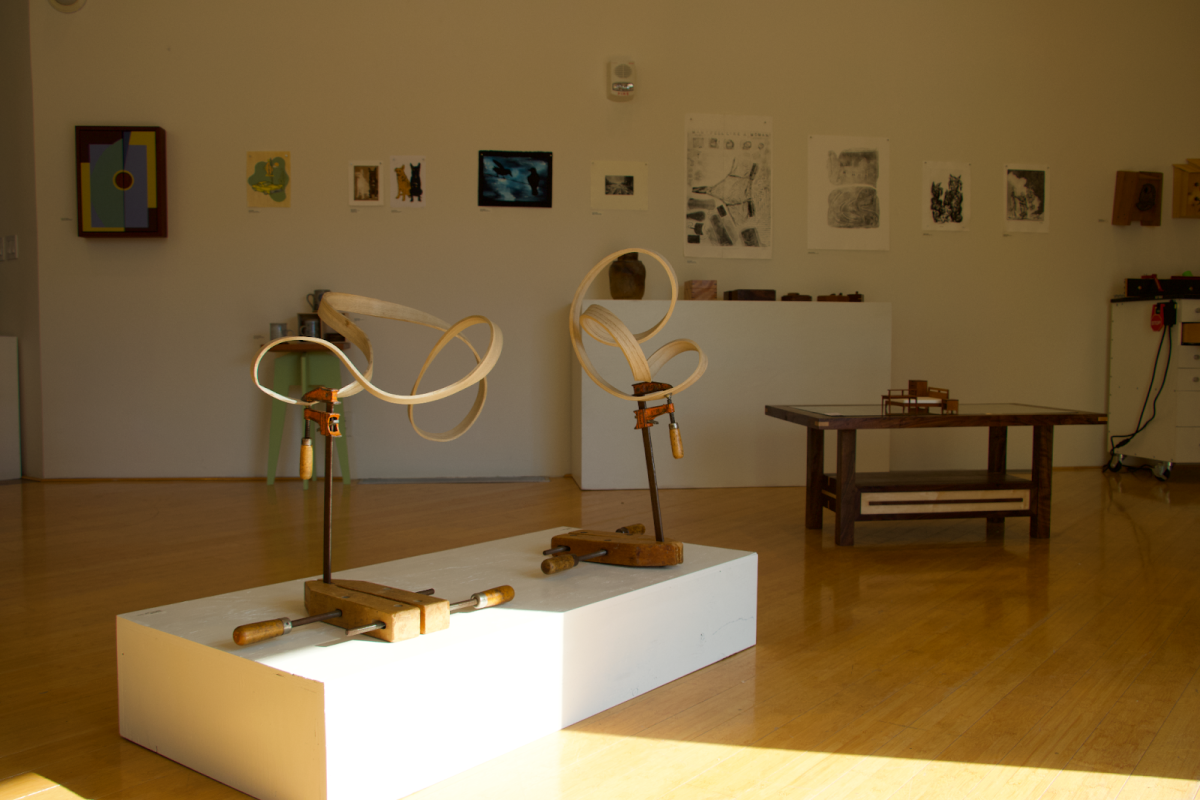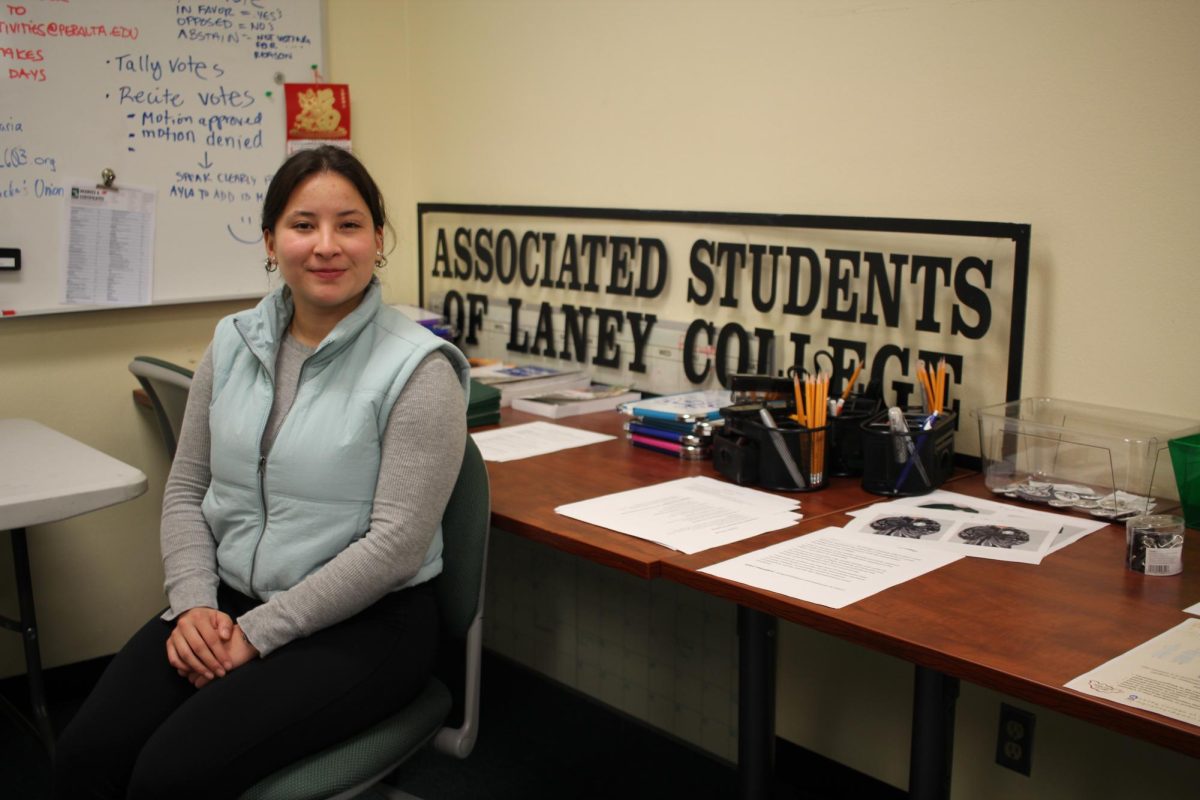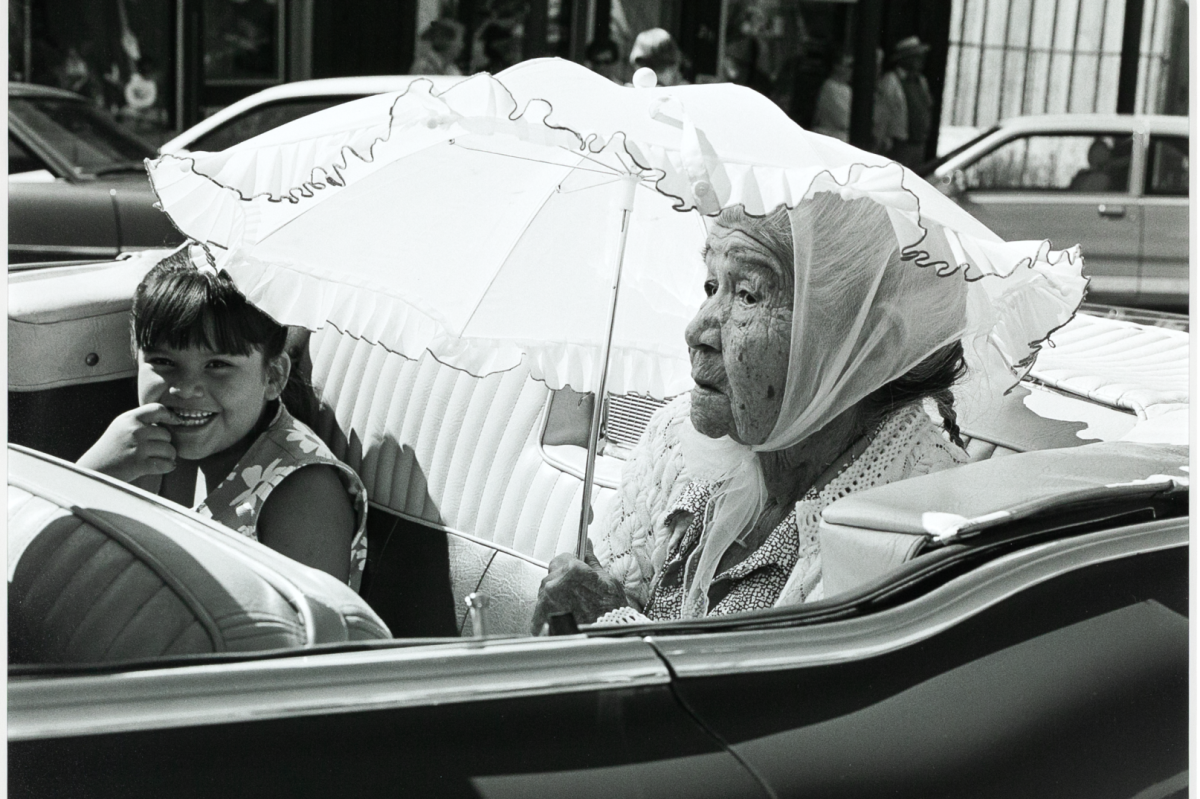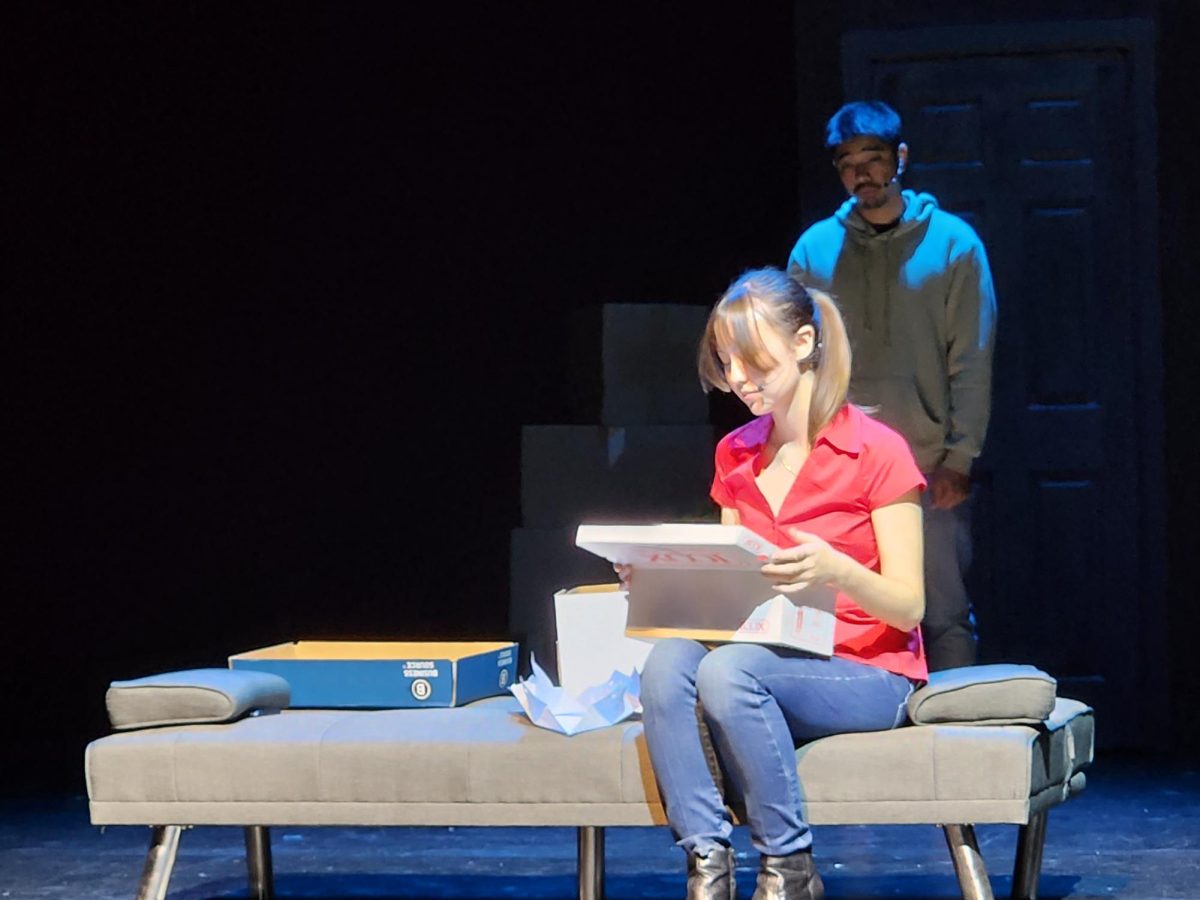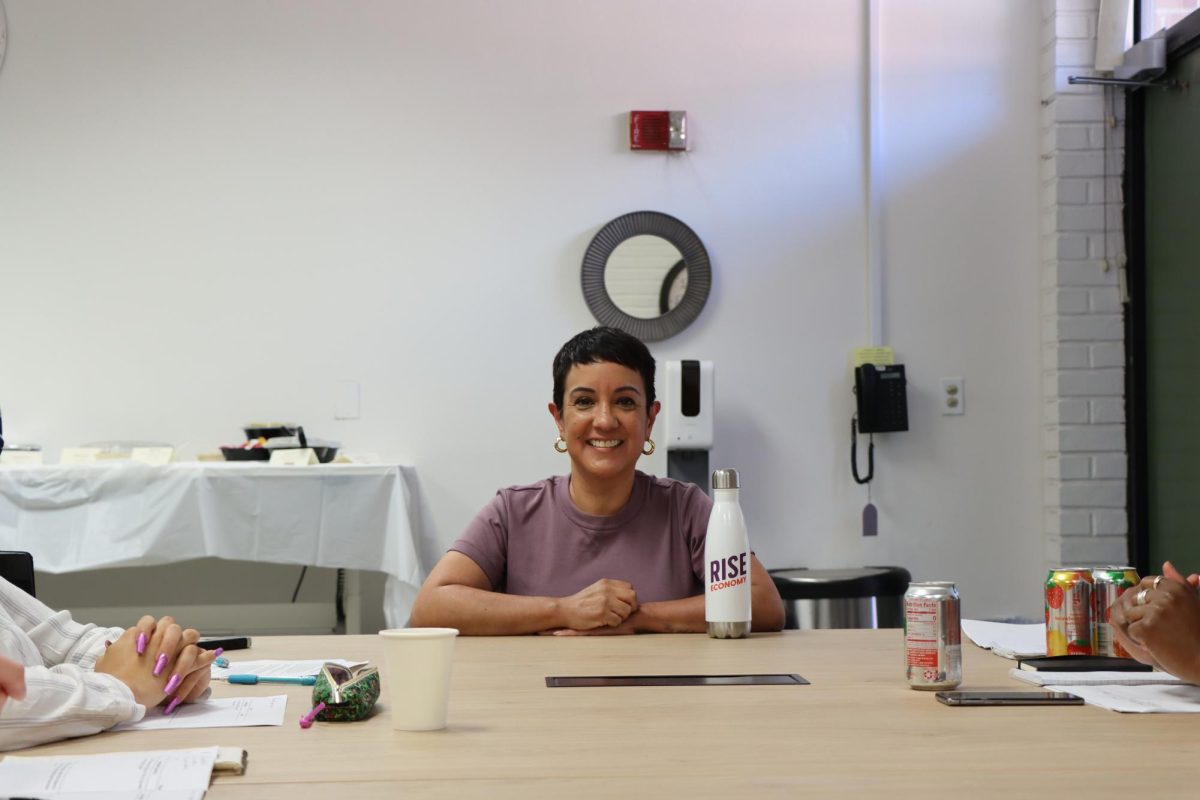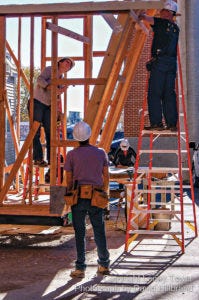
On Saturday, Oct. 15, the winners of the Sacramento Municipal Utility District’s (SMUD) “Tiny House Competition — Build Small and Win Big” contest were announced on the campus of Cosumnes River College in Sacramento. Laney College’s entry, “The Wedge,” took first place in the Architecture category.
Laney students also won in four other categories: Best Design, Best Furnishings, Best Landscaping and Best Video. The team also brought home $4000 in prize money from the contest. It was Laney’s first try at the Tiny House competition.
Matt Wolpe, a part-time instructor in the Carpentry Department, led the team through five semesters of work on the Wedge.
“To have the dedication of a part-timer throughout this was really amazing,” said Cynthia Correia, who heads the Carpentry Department. The team members changed each semester, depending on who signed up for the class.

The project was a collaboration between several departments. Wood tech made the cabinets, carpentry built the house, EET (electronics) did the solar, architecture worked on design, and graphic arts did the video. Theresa Halula from Merritt College did the landscaping.
Additional faculty who helped on the project include Forough Hashemi, Kevin Byrne, Karl Seelbach, Myron Franklin and Rosendo DelToro. Lifan Zhang and Julian Izdebski made the videos.
“The wedge shape,” Wolpe explained, “in addition to giving it a unique architectural identity, allows for more space in the interior by pushing the loft bed further out from the trailer, adding to the sense of openness inside.”
The sloped roof gives generous head height for reading in bed. The angled rear wall provides additional room for moving around in the space and adds to the roomy feel.
Tucked into the wedge-shaped corner, the living room features a built-in L-shaped couch which takes advantage of the sloping rear wall to provide a very comfortable lounging area for two, or seating for up to four when guests visit.
A built-in table doubles as dining area and work space. It is large enough to allow for two complete place settings and a laptop computer to be set-up at the same time.
There is a 20” computer monitor mounted to the wall behind the desk area with a swing arm so that it can be viewed from either the desk, the kitchen, or the living room couch.
The Wedge was designed to be zero-water and zero-waste as well as zero-energy.
It has a complete bathroom with everything needed to provide for convenient daily hygiene, including a full-size shower.
A Nature’s Head composting toilet reduces water needs, and the composted wasted matter can be processed for future use in the garden.
The Wedge generates its own power via an array of solar panels installed on the roof. It is designed to run solely on its own generated power.
Last year Correia headed the original Tiny House project. Her team built the “Dandelion,” which was purchased by a private citizen in Oakland.
She envisions tiny houses as a solution to homelessness, and is striving for “a model that can be mass produced, one that will be a home, not a shed.”
In the Tiny House video, a succession of tiny house dwellers give testimonials to the benefits of living in this new form of housing.
They like being freed from prohibitive rents and being free to pick up and move the house any time they choose. They like being freed from living with parents. One likes being freed from possessions.
Clearly, these tiny houses give their dwellers a sense of freedom.
To see The Wedge back in its original home, visit Laney College and look for the construction area between the G building and the Student Center.
To see the whole process, check out photos and live action videos of “The Wedge” on its website: thewedgeoakland.com.
SMALL COMFORTS Laney’s Tiny Homes combine efficiency and hospitability
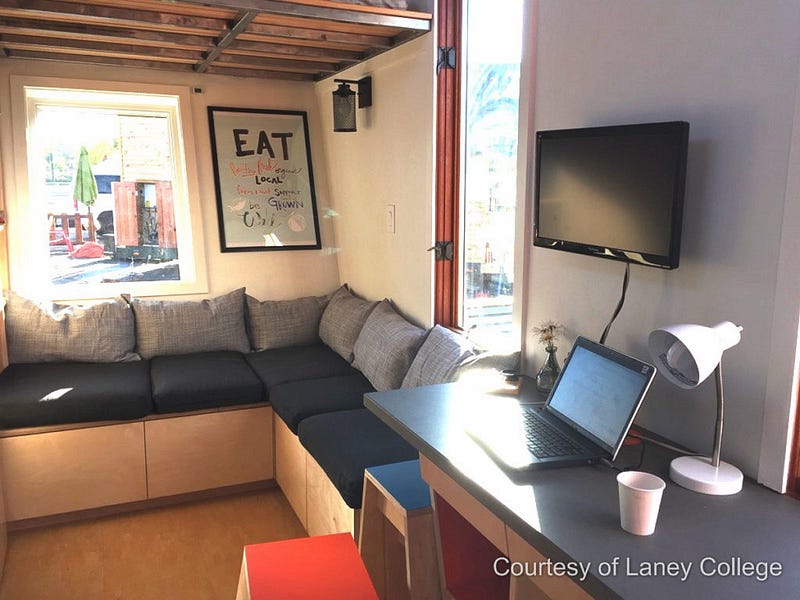
Laney College’s entry into the 2016 Tiny House Competition featured a wide range of amenities to provide a comfortable and habitable space. The home, called “The Wedge” affords the comfort of a full-size shower as well as bathroom sink and counter. The built-in seating area was crafted by Laney’s Woodworking Department.
